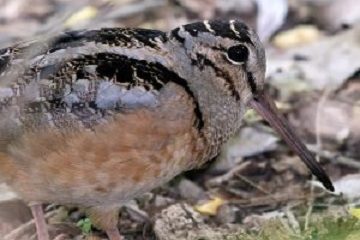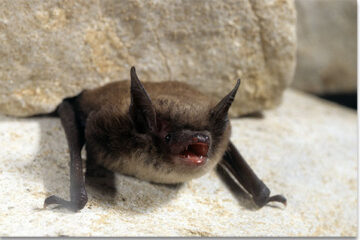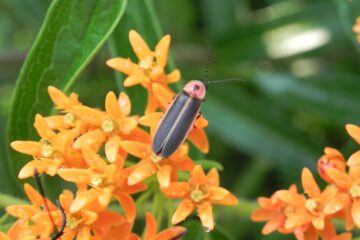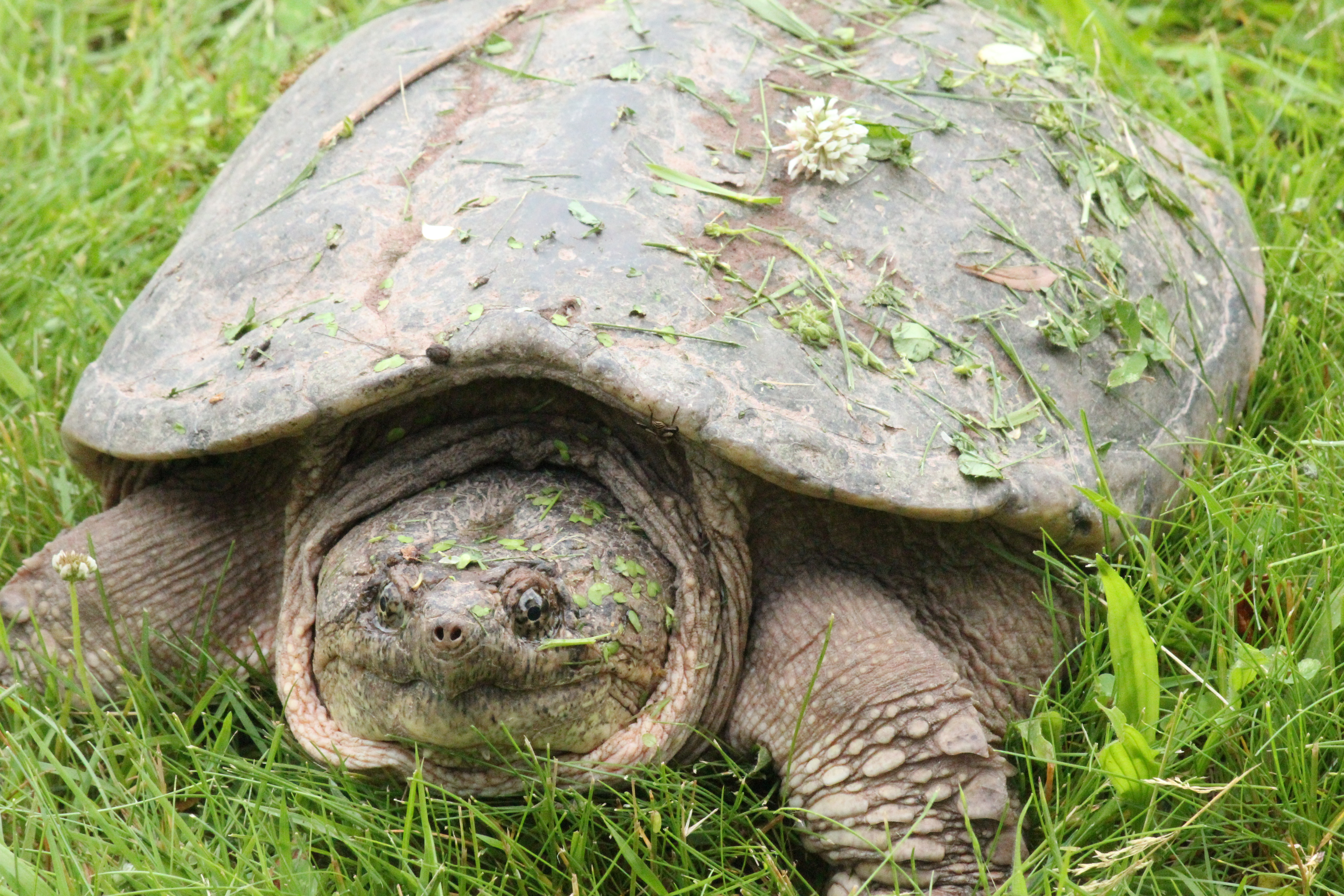 Snapping Turtle
Snapping Turtle
Chelydra serpentina
Habitat: The Snapping Turtle is widespread and found throughout the United States and live in quiet, muddy bottomed water. They are sometimes seen floating just below the surface.
Food: Snapping Turtles feed on aquatic plants, crustaceans, fish, waterfowl and carrion.
Behavior: Snapping Turtles have the ability to quickly lurch forward as an adaptation to catch their prey and to protect themselves.
Life Cycle: Females come on land to lay eggs, and can be very aggressive.
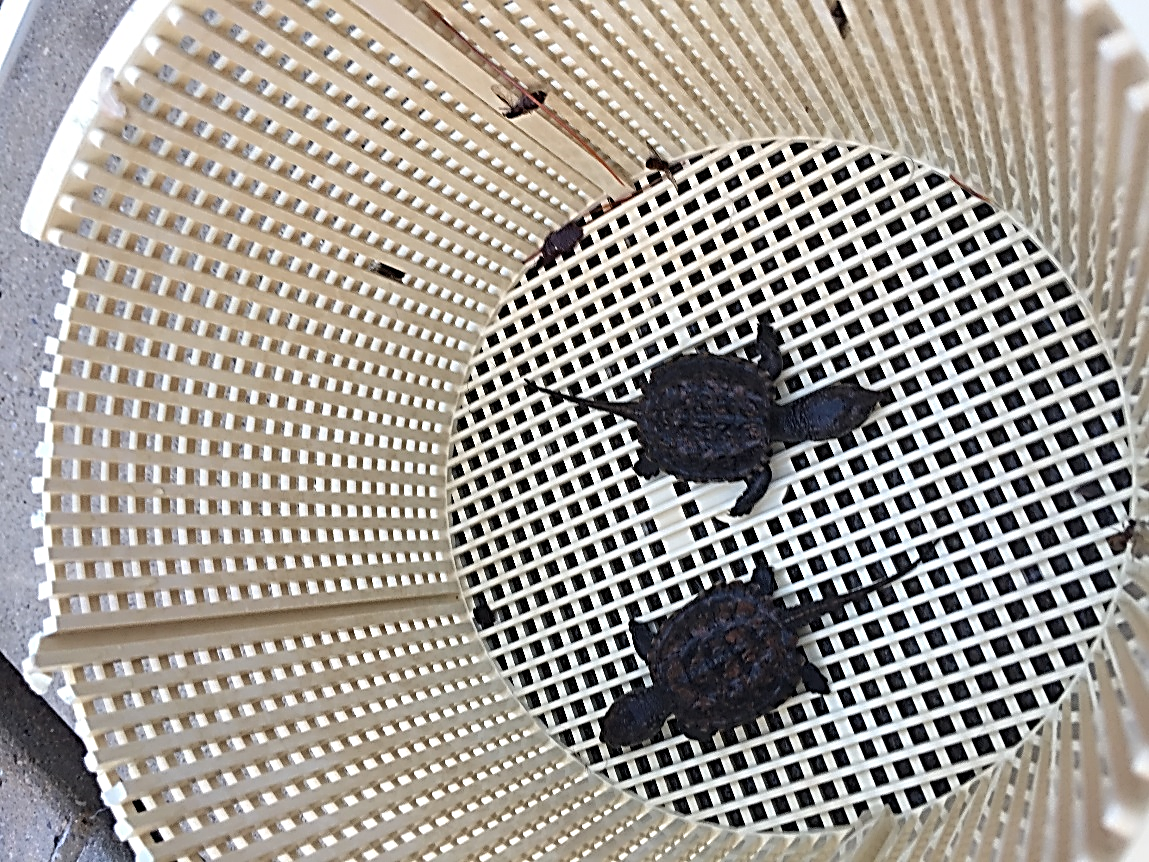
Photo by Debbie Newcomb
Conservation: Common and widespread.
Interesting Facts: Adults may weigh from 20 to 60 pounds and have a carapace (upper part of shell) 8 to 20 inches long and a smaller plastron (lower part of shell). Due to its small plastron, the snapping turtle is unable to fully retreat inside its shell. They have a big head, long neck, long tail and a brown carapace often covered with algae or mud. They have powerful jaws and are easily agitated. They are not safe to handle.
Credits/Resources: 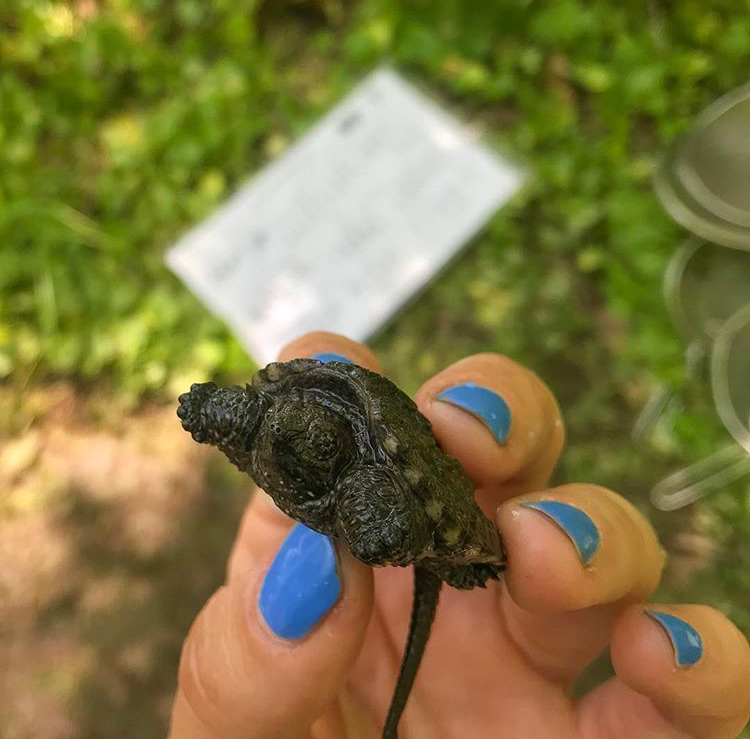
The Readers Digest Association, Inc. Reader’s Digest North American Wildlife – An Illustrated Guide to 2,000 Plants and Animals. Pleasantville, NY. Montreal. 1982
Reid, George K. Pond Life – A Golden Guide from St. Martin’s Press. New York. 2001.
Zim, Herbert S. and Smith, Hobart M. A Golden Guide to Reptiles and Amphibians. Golden Books Publishing. New York, New York. 1987.
Please share any questions, comments, or photos that you and your child have on the Raritan Headwaters Learning Community Facebook Page!
More Raritan Headwaters Learning Resources

